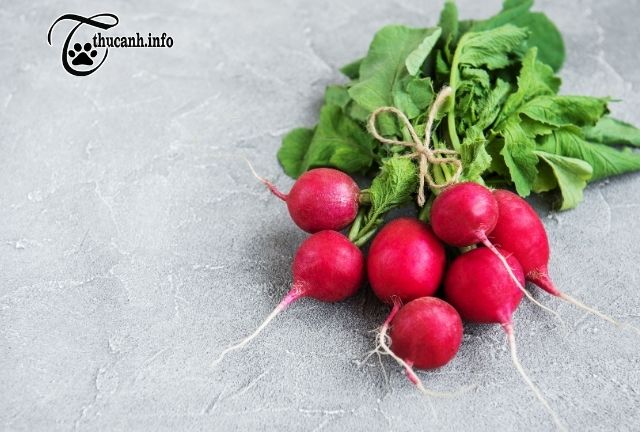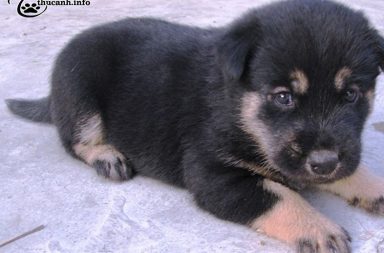Can hamsters eat radish? Hamsters are becoming increasingly popular as pets. They are small, cute, and relatively easy to care for. However, when it comes to feeding your hamster, it is important to know what foods are safe and healthy for them. One food that often comes up in discussions about hamster nutrition is radish.
In this article, we will explore whether or not hamsters can eat radish, the nutritional value of radishes, and other related information.

Are radishes good for hamsters?
1, Can Hamsters Eat Radish?
Yes, hamsters can eat radish in moderation. Radishes are not toxic or harmful to hamsters, and they can provide some health benefits. However, as with any new food, you should introduce radish to your hamster’s diet gradually and in small amounts to avoid digestive upset or choking hazards.
It is worth noting that some hamsters may not like the taste or texture of radish, so it’s best to observe their reaction and adjust accordingly. Also, do not feed your hamster radishes that have been seasoned, flavored, or cooked, as they may contain spices, oils, or additives that can be harmful to your pet.
2, Nutritional Composition of Radish
Radishes are low in calories but rich in several essential nutrients. According to the United States Department of Agriculture (USDA), one cup of sliced radishes (116 grams) contains:
- Calories: 18
- Carbohydrates: 4 grams
- Fiber: 2 grams
- Protein: 1 gram
- Fat: 0 grams
- Vitamin C: 29% of the Reference Daily Intake (RDI)
- Folate: 8% of the RDI
- Potassium: 7% of the RDI
- Calcium: 3% of the RDI
- Magnesium: 3% of the RDI
Radishes also contain small amounts of other vitamins and minerals, such as vitamin K, vitamin B6, iron, and zinc. Moreover, radishes are a good source of antioxidants, particularly anthocyanins and flavonoids, which may help reduce inflammation and prevent chronic diseases.
2.1, Vitamins and Minerals in Radish for Hamsters
Radish is rich in various vitamins and minerals that contribute to the overall well-being of hamsters. It contains essential nutrients such as vitamin C, vitamin K, potassium, and calcium. These vitamins and minerals play a crucial role in supporting their immune system, promoting healthy bone development, and ensuring proper functioning of vital organs.
Hamsters can benefit from the vitamin C content in radish, as it acts as an antioxidant and helps combat free radicals that can cause cell damage. Vitamin K plays a vital role in blood clotting and maintaining healthy bones. Potassium is necessary for proper muscle function and nerve transmission, while calcium is essential for strong teeth and bones.
2.2, Fiber Content in Radish and Its Digestive Benefits
Another significant benefit of radish for hamsters is its high fiber content. Fiber plays a crucial role in maintaining a healthy digestive system and preventing digestive issues such as constipation. Radish contains both soluble and insoluble fiber, which helps regulate bowel movements and promotes optimal gut health.
The fiber in radish aids in the smooth passage of food through the digestive tract, preventing the buildup of waste material and potential blockages. It also provides a feeling of fullness, which can help prevent overeating and maintain a healthy weight for hamsters.
Incorporating radish into a hamster’s diet can contribute to their overall nutritional needs and promote a healthy digestive system, thanks to its vitamins, minerals, and fiber content.
Remember to introduce radish gradually and in moderation to prevent any adverse effects on your hamster’s health. Monitor their reaction to radish and consult a veterinarian if you have any concerns or questions about their dietary needs.
3, Safety Considerations and Moderation

Can hamsters eat radish leaves?
When it comes to feeding radish to hamsters, it is important to exercise caution and ensure moderation in their diet. While radish can offer nutritional benefits, it is essential to consider safety guidelines to protect their well-being.
3.1, Portion Control for a Balanced Diet
One key aspect of feeding radish to hamsters is practicing portion control. Radish should be offered in appropriate serving sizes to maintain a balanced diet. Providing small, bite-sized pieces of radish ensures that hamsters can consume it comfortably and prevents overindulgence.
It is crucial to remember that radish should be included as a supplement to their regular diet and not as a primary food source. Hamsters have specific dietary requirements, and a variety of foods should be included to meet their nutritional needs. By offering radish in controlled portions, you can enhance their diet while ensuring they receive a balanced and well-rounded meal.
3.2, Risks of Radish for Hamsters
While radish can be a healthy and safe snack for hamsters, there are some potential risks to consider. Here are some of them:
- Digestive Problems
Radishes contain several types of sugars, such as raffinose and stachyose, which are not easily digestible by hamsters’ small intestines. Consuming too much radish or introducing it too quickly into your hamster’s diet can lead to bloating, gas, diarrhea, or other digestive problems.
- Oxalate Content
Radishes, especially the leaves and stems, contain oxalates, which are compounds that can bind with calcium and form crystals in the urinary tract or kidneys. Hamsters with a history of bladder stones or calcium-related disorders should avoid high-oxalate foods like radish.
- Allergic Reactions
Some hamsters may develop allergic reactions to certain foods, including radish. If you notice any signs of itching, swelling, hives, or breathing difficulties after giving your hamster radish, stop feeding it and seek veterinary advice immediately.
4, Gradual Introduction Process
When introducing radish to your hamster’s diet, it is important to follow a gradual introduction process. Sudden dietary changes can upset their digestive system, so it’s best to introduce new foods slowly and monitor their reaction.

Is radish ok for hamsters?
4.1, Step-by-step Instructions for Introducing Radish
1, Start by offering a small piece of radish, about the size of your hamster’s paw, as a trial portion.
2, Place the radish piece in their food dish or offer it as a hand-fed treat.
3, Observe your hamster’s reaction and overall health for the next 24 to 48 hours.
4, If there are no adverse effects, such as digestive issues or allergic reactions, you can gradually increase the amount of radish over time.
5, Continue to monitor your hamster’s response and adjust the quantity accordingly.
It’s essential to introduce radish alongside their regular diet to ensure a balanced nutrition plan. Radish should not replace their primary food source but rather complement it.
4.2, Monitoring Hamster’s Reaction and Adjusting as Needed
Throughout the introduction process, closely monitor your hamster’s reaction to radish. Watch for any signs of discomfort, digestive problems, or allergic reactions. If you notice any adverse effects, reduce or eliminate radish from their diet and consult a veterinarian for further guidance.
By gradually introducing radish and monitoring their response, you can ensure that your hamster can safely enjoy this new addition to their diet.
5, Diversifying the Hamster’s Diet
To provide a well-rounded and enjoyable diet for your hamster, it’s important to diversify their food options. While radish can be a nutritious addition, incorporating a variety of foods ensures they receive a wide range of nutrients.
5.1, Safe and Nutritious Vegetable Options
In addition to radish, there are many safe and nutritious vegetable options that you can offer to your hamster. Some examples include carrots, broccoli, spinach, and bell peppers. These vegetables provide a mix of vitamins, minerals, and fiber that contribute to your hamster’s overall health.
5.2, Exploring Other Hamster-Friendly Treats
Aside from vegetables, there are various other hamster-friendly treats you can introduce to their diet. These may include small amounts of fruits, seeds, and occasional commercial treats specifically designed for hamsters. However, it’s important to remember that treats should be offered in moderation to maintain a balanced diet.
Can hamsters eat radish? According to THUCANH, radish can be a safe and nutritious addition to your hamster’s diet when introduced gradually and in moderation. The nutritional benefits of radish, including vitamins, minerals, and fiber, can contribute to their overall well-being.
However, it’s crucial to monitor your hamster’s reaction and be aware of potential risks and allergies. If any negative symptoms occur, discontinue feeding radish and seek advice from a veterinarian.
Remember to diversify your hamster’s diet with other vegetables and treats to ensure they receive a varied and balanced nutritional intake. By providing a diverse range of foods, you can enhance their diet and promote their overall health and happiness.


